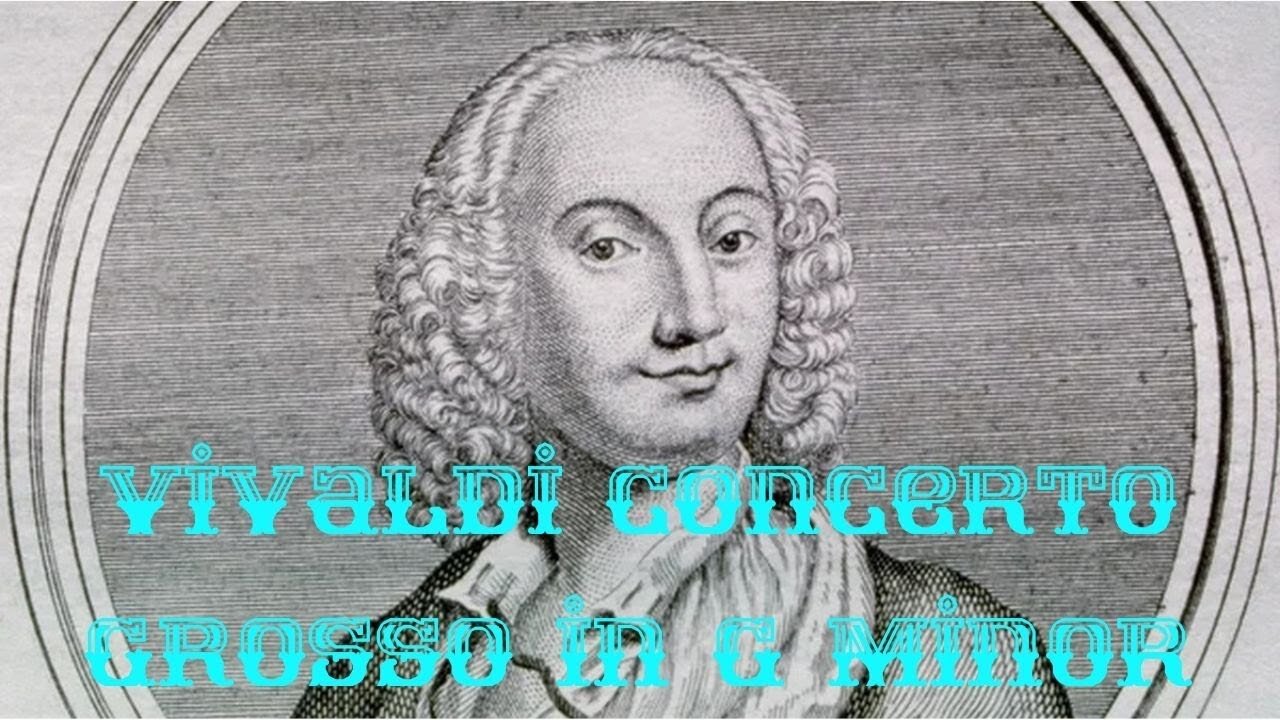Premium Only Content

Vivaldi Concerto Grosso n G minor, Op. 3
#classical_music #Vivaldi #concerto_grosso
Vivaldi Concerto Grosso n G minor, Op. 3
1.Adagio 00:00
2.Allegro 02:54
3.Larghetto 06:08
4.Allegro 10:43
Vivaldi's Concerto Grosso in G minor, Op. 3 is a piece of music that showcases the composer's skill in creating complex and engaging compositions. This concerto is a part of a set of twelve concertos that are collectively known as L'estro armonico (Harmonic Inspiration), which is considered to be one of Vivaldi's most influential works.
The Concerto Grosso in G minor, Op. 3 is structured in three movements: Largo - Allegro, Adagio - Allegro - Adagio, and Allegro. The first movement begins with a slow and melancholic Largo section that is followed by an energetic and fast-paced Allegro section. The contrast between the two sections creates a dynamic and engaging musical experience that sets the tone for the rest of the concerto.
The second movement, Adagio - Allegro - Adagio, is a complex and intricate piece that showcases Vivaldi's skill in creating complex counterpoint. The soloists and the accompanying orchestra engage in a musical dialogue that is both intricate and beautiful, creating a rich and layered sound that is both engaging and satisfying to the ear.
The final movement, Allegro, is a lively and energetic piece that brings the concerto to a rousing conclusion. The soloists engage in a virtuosic display of technical skill, playing fast and intricate runs that showcase their mastery of the instrument. The accompanying orchestra provides a driving and dynamic backdrop that propels the music forward, creating a thrilling and exhilarating musical experience.
One of the most notable aspects of Vivaldi's Concerto Grosso in G minor, Op. 3 is the composer's use of the concerto grosso form. This form features a small group of soloists (the concertino) playing against a larger ensemble (the ripieno), creating a rich and layered sound that is both intricate and engaging. Vivaldi's use of this form showcases his ability to create complex and nuanced compositions that are both challenging and rewarding for both the performers and the listeners.
Overall, Vivaldi's Concerto Grosso in G minor, Op. 3 is a stunning example of baroque music that showcases the composer's skill in creating complex and engaging compositions. Its intricate counterpoint, dynamic orchestration, and demanding technical requirements make it a challenging but rewarding piece for both the performers and the listeners. It is a testament to Vivaldi's lasting influence on the world of classical music, and a joy to experience for anyone who appreciates the beauty and complexity of baroque music.
-
 34:26
34:26
Classical music_Music Inspiration
3 months agoAram Khachaturian Concerto for Violin and Orchestra
1412 -
 42:35
42:35
Dad Dojo Podcast
6 hours agoEP29: Lebron Turns Heel, Steroids and more
4.49K -
 1:16:21
1:16:21
Kim Iversen
3 hours agoXi and Zelensky IGNORE Trump: Is America's Power Crumbling?
42.8K38 -
 12:19
12:19
T-SPLY
5 hours agoDemocrats Start Economic War With El Salvador!
8926 -
 13:42
13:42
SantaSurfing
4 hours ago4/24/2025 - Part 1 on Endless Frontiers Efficient & Powerful Tesla Homes! Revolutionary!
4.97K12 -
 LIVE
LIVE
TheTapeLibrary
9 hours agoThe Disturbing Case of the Becker Haunting (FULL PARANORMAL DOCUMENTARY)
90 watching -
 LIVE
LIVE
Quite Frankly
4 hours ago"Op Sea Spray, Assassination Files, MK-Internet" ft. Eric Hunley 4/24/25
567 watching -
 LIVE
LIVE
LFA TV
8 hours agoAmerica’s Shameful Foreign Policy | TRUMEPT DAILY 4.24.25 7PM
142 watching -
 1:25:56
1:25:56
vivafrei
5 hours agoJudge Cano BANNED from the Bench! Is That the COVER-UP? Tariffs, Trans in Military & Fall of Canada!
72.1K30 -
 47:49
47:49
Candace Show Podcast
3 hours agoShannon Sharpe Out At ESPN. I Taylor Swift Subpoena Incoming. | Candace Ep 182
38.8K65